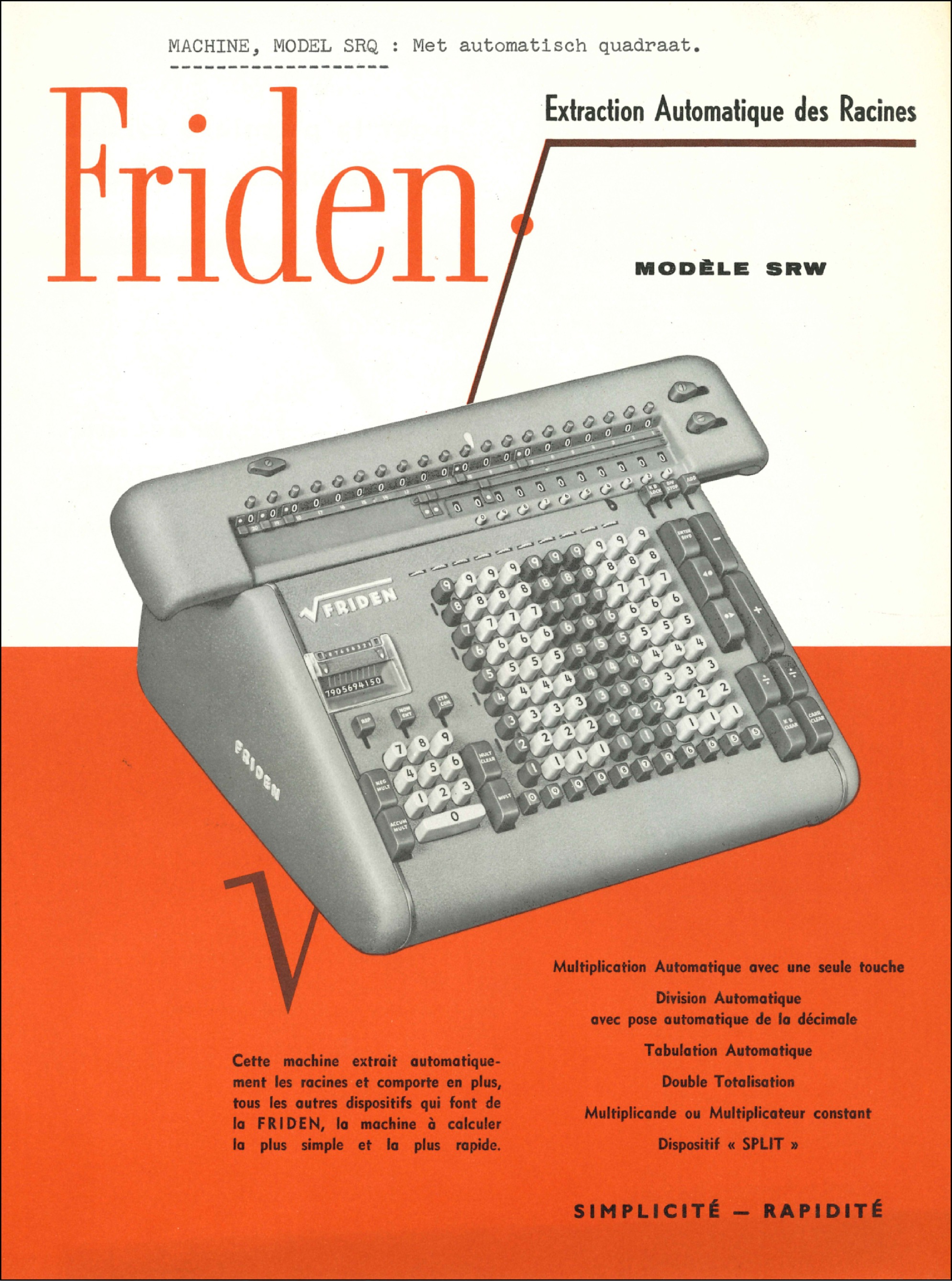Once the electric motor had definitively made its way into mechanical calculating technology, it quickly led to more automatic and semi-automatic functions - after all, you didn't get tired of turning the handle anymore anyway.
This ranged from automatic completion of the partial products of a multiplication to fully automatic multiplication with presetting of both factors on the same keyboard. In so-called "stop-division", the motor stops after the machine makes a correction if the remainder goes below 0, and the user has to move the carriage manually and start the next digit. Fully automatic division was also possible, even with a time-saving algorithm.
The culmination of these developments was the Friden square root automaton, which, by means of an ingenious algorithm, could autonomously and automatically extract a square root from a pre-set number.
s/n 10300, Glashütte, Germany, ca. 1915
The first Leibniz machine with a full keyboard, made by Archimedes. The keyboard made it much easier to use the machine for addition problems - with setting sliders, addition is anything but practical. This machine is also the first to have tens' carry not only in the result register but also in the revolution counter (hence the two direction switches to the left of the keyboard). The machine was later electrified and automated as the Archimedes DeaD (Model D, electric, automatic Division). The German-speaking marketing department of Archimedes did not understand the threatening nature of this name ...

Collection: C. Vande Velde
s/n 15002, Glashütte, Germany, ca. 1935
The largest and most automated machine in the Archimedes range - two result registers, entry of multiplicand and multiplier on the same keyboard, and automatic division. In fact, this 22kg machine has exactly the same functionality as a simple electronic calculator today, right down to the way the numbers and operations are entered into the machine.The machine can be seen in action here.

Collection: C. Vande Velde
s/n 15914, St. Georgen, Germany, ca. 1951
Design and ergonomics became important selling points - by integrating the controls into the front of the machine and tilting the registers towards the user, the Badenia TE16 was easy to use and the results were easy to read. This machine has only semi-automatic multiplication, i.e. it runs through position by position of the multiplicand. It was sold by Max Zetzsche in Stuttgart and, according to the plaque on the carriage, it was used by the "High Command for Occupied Germany" - the regulatory and control body for the development of the newly established Republic of Germany (West Germany) from 1949 to 1955.

Collection: C. Vande Velde
s/n 353448, San Leandro, CA, U.S.A., ca. 1952
This is one of the three models in the Friden range that featured automatic square root extraction using a modified Toepler algorithm, in which the number entered into the machine is first multiplied by 5, and then odd multiples of 5 are sequentially subtracted. For the exact algorithm, see https://www.hpmuseum.org/root.htm.
Furthermore, it has a separate ten-key keypad on the left of the machine for presetting the multiplier, and fully automatic division. However, there were not one but two keys to start the division - the reason for this was a competitor's patent for "division at the touch of a single key". Friden's legal department was concerned enough to insist that there had to be two keys to control the division in order to avoid infringing this patent.

Collection: C. Vande Velde
s/n ?, BLIKMAN & SARTORIUS, FACIT Åtvidaberg, Zweden , 1954
This electrically driven pinwheel machine is capable of automatic division and multiplication. It also automatically sets the registers to zero. This is the only pinwheel machine in this section of the exhibition. The name Blikman & Sartorius refers to a well-known firm for office supplies, furniture and machines in Amsterdam. We can also see the typical arrangement of the ten number keys and the control keys, which allow the machine to be operated with one hand.

Collection: E. Smet (item 267)
s/n B104197, Amsterdam, Netherlands, ca. 1958
American Leibniz cylinder machine, assembled in the Netherlands. Again we see advanced automation, with full pre-setting of factors for multiplication, automatic division and even automatic squaring for easy statistical calculations. Other features include a second revolution register in the carriage, tabulation and automatic resetting of the registers.

Collection: C. Vande Velde
ca. 1952
Two different approaches to the same problem are illustrated here - Friden built a fully automatic machine for extracting a square root (if you know which keys to press...), while Monroe wrote a manual explaining the algorithm to the user so that (s)he could run it manually!
.


Collectie: C. Vande Velde
Stylistically, this Olympia machine is beautiful, with the same visual language and colour scheme as the entire range of Olympia calculators from the 1960s. Here too we see the clear move towards number entry via a block ten-key keypad instead of a full keyboard, and many integrated automatic calculation and transfer functions. This machine works on the pendulum wheel principle, unlike most other mechanical calculators.

Collection: C. Vande Velde